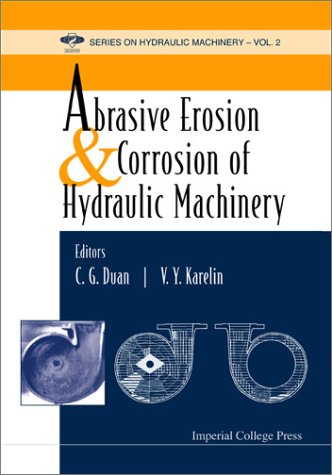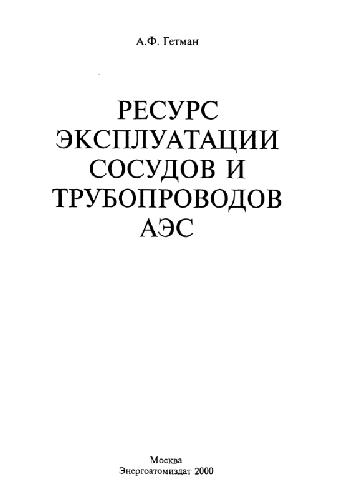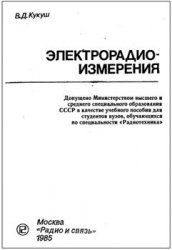C. G. Duan, V. Ia Karelin1860943357, 9781860943355
All the important subjects are discussed including fundamentals, calculation, analysis and numerical simulation of liquid–solid flow design, erosion-resistant materials, interaction between cavitation and abrasive erosion, and corrosion of hydraulic machinery.
Table of contents :
CONTENTS……Page 6
Foreword of the Editor……Page 12
Contributing Authors……Page 14
1.1 Introduction……Page 18
1.2.1 Mechanism of Hydro-abrasion……Page 21
1.3.1 Illustrative Examples of Hydraulic Abrasion in Hydraulic Turbines……Page 38
1.3.2 Silt Erosion of Hydro-turbines……Page 42
1.4.1 Examples of Hydraulic Abrasion Taking Place in Pumps……Page 51
1.4.2 Silt Erosion in Pumps……Page 53
1.5 Technical and Economic Effect Caused by the Erosion Arising in Hydraulic Turbines and Pumps……Page 59
1.6.1 Approach Avenues on Anti-silt Erosion of Hydraulic Machinery……Page 65
1.6.3 Prediction of Silt-Erosion Damage in Pump Design by Test……Page 66
References……Page 68
2.1 Calculation of Hydraulic Abrasion Proposed by V.Ya. Karelin and A. I. Denisov……Page 70
2.2.1 Prediction Erosion Model Proposed by Finnie and Bitter……Page 91
2.2.2 Mechanistic Model Developed by The Erosion/Corrosion Research Center……Page 101
2.2.3 Prediction Erosion Model Proposed by McLaury et al……Page 105
References……Page 110
3.1.1 Introduction……Page 112
3.1.2 General Concepts of Multiphase Flow……Page 114
3.1.3 Basic Equations of Multiphase Flow……Page 118
3.2.1 Closed Turbulence Model Using the Modeled Second Correlation……Page 127
3.2.2 The Algebraic Turbulence Stresses Model of Two-Phase Flow……Page 134
3.2.3 The k – ε – kp Turbulence Model of Two-Phase Flow……Page 137
3.2.4 Lagrangian-Eulerian Model for Liquid-Particle Two-Phase Flow……Page 142
3.3.1 Numerical Method for Simulating Liquid-Particle Two- Phase Flow……Page 149
3.3.2 Calculated Examples of Two-Turbulent Flow by Using Two-Fluid Model……Page 158
References……Page 169
4.1.1 Introduction……Page 172
4.1.2 Impulse Turbines……Page 173
4.1.3 Reaction Turbines……Page 189
4.2.1 Effects of Silt-Laden Flow on Cavitation Performances of Hydrauliv Turbines……Page 198
4.2.2 Model Experiments on Cavitation of Turbines in Silt-Laden Flow……Page 203
4.2.3 Selection of Geometric Parameters of Turbines Operating in Silt-Laden Flow……Page 204
4.3.1 Internal Flow Characters through Slurry Pumps……Page 213
4.3.2 Effects of Impeller Geometry on Performances of Slurry Pumps and Its Determination……Page 219
4.3.3 Vane Pattern……Page 225
4.3.4 Hydraulic Design of Centrifugal Slurry Pumps……Page 229
4.3.5 Hydraulic Design of Slurry Pump Casing……Page 233
4.3.6 Hydraulic Design for Large-Scale Centrifugal Pumps in Silt- Laden Rivers……Page 236
4.4.1 Working Condition of Solid-Liquid Flow Pumps……Page 237
4.4.2 Hydraulic Design of Solid-Liquid Flow Pumps……Page 240
4.4.3 Examples of the Design……Page 247
References……Page 249
5.1.1 Multi-posion Test of Erosion Resistance in a Real Water Turbine……Page 252
5.1.2 Laboratory Erosion Tests……Page 258
5.1.3 Selection of Materials for Hydraulic Machines……Page 263
5.2 Metallic Materials……Page 267
5.2.1 Testing Apparatus and Procedure……Page 268
5.2.2 Test Results……Page 272
5.2.3 Damage on Pump Components……Page 274
5.2.4 Requisites for Laboratory Tests……Page 275
5.3 Organic Polymer Linings……Page 279
5.3.1 Conventional Polyurethane Lined Pipe……Page 280
5.3.2 Room-Temperature Curing Polyurethane (RTV)……Page 282
5.3.3 Durability of RTV Lined Pipe……Page 286
5.3.4 Cost Estimation……Page 289
5.4 Ceramics……Page 290
5.4.1 Bulk Ceramics……Page 292
5.4.2 Cemented Carbides……Page 296
5.4.3 Coatings……Page 299
5.5.1 Bead Welding……Page 302
5.5.2 Paving Welding……Page 308
5.5.3 Alloy Powder Spray Coating……Page 309
5.6 Non-Metallic Protection Coating……Page 315
5.6.1 Epoxy Emery Coating……Page 316
5.6.2 Composite Nylon Coating……Page 320
5.6.3 Rubber Coating of Polyurethane……Page 322
5.6.4 Composite Enamel Coating……Page 324
5.7 Surface Treatment against Erosion Damage……Page 325
5.7.2 Diffusion Permeating Plating……Page 326
References……Page 329
6.1 Effect of Suspended Particles on Incipient and Developed of Cavitation……Page 332
6.2. Effect of Cavitation on Hydroabrasive Erosion……Page 347
6.3 Relationship between Hydroabrasive Erosion and Cavitation Erosion……Page 355
References……Page 365
7.1.1 Corrosion Cell……Page 366
7.1.2 Electrode Potentials……Page 368
7.1.3 Polarization……Page 373
7.1.4 Polarization Diagram……Page 376
7.2.1 Pourbaix Diagram……Page 378
7.2.2 Influences of pH and Fluid Velocity upon Corrosion Rate……Page 380
7.2.3 Cathodic Protection……Page 383
7.2.4 Passivity……Page 385
7.2.5 Stainless Steel……Page 386
7.2.6 Polarization-Resistance Method……Page 388
7.3.1 Corrosion Caused by Velocity Difference……Page 390
7.3.2 Corrosion Promoted by Mixed Use of Different Materials (Galvanic Corrosion)……Page 394
7.3.3 Crevice Corrosion and Other Localized Corrosion……Page 398
7.4.1 Experiment on Slurry Erosion-Corrosion……Page 404
7.4.2 Basic Equations Describing the Combined Effect of Erosion and Corrosion……Page 411
7.4.3 Analysis on a Single Crater……Page 414
7.4.4 Parameters Affecting the Mutual Interaction Mechanism……Page 421
References……Page 423







Reviews
There are no reviews yet.